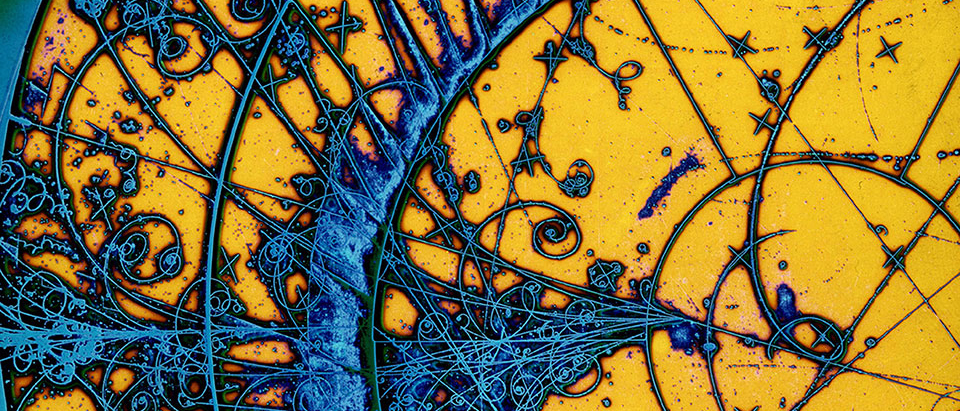High Energy Physics

The research in high energy physics at Uppsala University carries out research in fundamental physics, making experimental and phenomenological endeavours into uncharted regions of physics beyond the explored smallest and largest scales.
The research in high energy physicsWe study the smallest building blocks of nature and their interactions using sophisticated experiments such as the ATLAS detector at CERN’s Large Hadron Collider in Geneva or the IceCube Neutrino Observatory, a massive neutrino telescope built deep into the ice cap of the South Pole. To test and interpret experimental and observational results we also develop new theoretical models both within and beyond the Standard Model.
ATLAS
The research in high energy physics explores the elementary particles and the fundamental forces in nature with the ATLAS experiment at the CERN Large Hadron Collider (LHC) in Geneva. Currently the main research activity is development of instrumentation, data collection and physics analysis of the proton–proton collision data successively being accumulated by ATLAS.

Astroparticle Physics
Astroparticle physics (sometimes called particle astrophysics) is an emergent field of research on the border between particle physics, astrophysics and cosmology. The theoretical branch of this field explores issues relating to the evolution of the cosmos, gravity, dark matter and dark energy, connecting the domain of particle physics with astrophysics and cosmology.

Theoretical Particle Physics
The research in theoretical physics focuses on theoretical physics research in elementary particle physics and astroparticle physics and establish the connection between abstract particle physics theories and reality by making predictions for experiments.

Accelerator Physics
Accelerator physics deals with the physics of charged particle beams and the design, construction, operation, and optimization of particle accelerators.

Grid Computing
The Grid Computing activities at Uppsala University dates back to the creation of the NorduGrid project in 2001. This project was initiated by high energy physicists in the Nordic Countries who wanted to create a computing infrastructure in the region suitable for the computing needs of the experiments at the Large Hadron Collider. In order to achieve this goal collaborations were started with scientists from other scientific fields with a similar interest in computing capabilities. The outcome of this project was a middleware suite that has since become known as the Advanced Resource Connector (ARC).
Publications
EasyScan_HEP: A tool for connecting programs to scan the parameter space of physics models
Part of Computer Physics Communications, 2024
Global analysis of the ALP effective theory
Part of Journal of High Energy Physics (JHEP), 2024
- DOI for Global analysis of the ALP effective theory
- Download full text (pdf) of Global analysis of the ALP effective theory
Search for non-resonant production of semi-visible jets using Run 2 data in ATLAS
Part of Physics Letters B, 2024
- DOI for Search for non-resonant production of semi-visible jets using Run 2 data in ATLAS
- Download full text (pdf) of Search for non-resonant production of semi-visible jets using Run 2 data in ATLAS
To profile or to marginalize: A SMEFT case study
Part of SciPost Physics, 2024
- DOI for To profile or to marginalize: A SMEFT case study
- Download full text (pdf) of To profile or to marginalize: A SMEFT case study
Analysis of Atmospheric Muon Bundles with IceCube
2024
- More publications
Contact
- Programme Professor
- Arnaud Ferrari
- Head of Division
- Rikard Enberg
- Contact details for High Energy Physics

